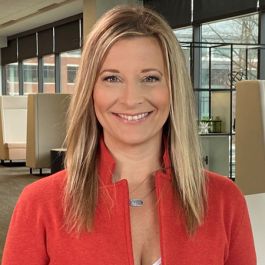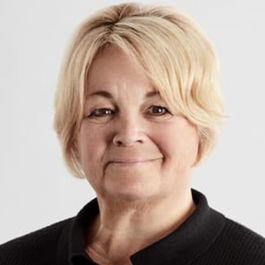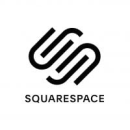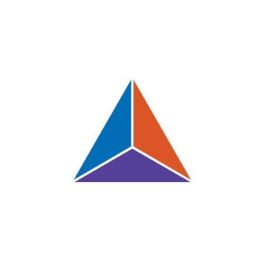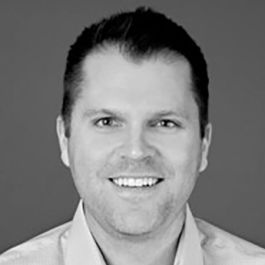The ancient principle of Sthira Sukham Asanam suggests that both yoga practice and life call for a delicate balance of effort and ease.
Translations of the Sanskrit Yoga Sutras of Patañjali elicit many variations of the concept: One’s stance should be steady yet comfortable, stable yet light, firm yet joyful. The pursuit of this equilibrium is fluid — the yogi must focus on ease when the body is tense or envision stability when the mind is restless.
From this ancient practice, enlightened tech companies can glean the importance of flexibility.
With about 60 million members encompassing America’s remote-capable workforce, Gallup reports that 59 percent prefer a hybrid schedule, 32 percent hope for a fully-remote model and 9 percent dream of working in the office. Progressive tech companies understand that the best time and place to work is both personal and transient. One employee might be hungry for remote work when life is hectic and yearn for the social dynamic of the office when the stream of work grows quieter — another may prefer the opposite.
“We benefit from having more flexibility and choice in how, when and where we work,” said Better Senior Director of Real Estate and Workplace Richard Duff. “We believe that the future of work allows for flexibility to do your best work.”
Empathizing with the wide variation of the New York commuter experience, Squarespace Chief People Officer Mary Good added: “There isn’t a one-size-fits-all approach that will work for every individual and every role. We trust our people to decide what work style best suits their needs and their role.”
As Michelle O’Rourke, human resources professional at CoreWeave, divined: “When employees feel invested in their impact on the organization, it really doesn’t seem to matter where they sit.”
When Built In caught up with nine of the leading companies in the city, their vision of the future became clear. Whether they ascribe to morning meditations in their living room or a midday coffee ritual among colleagues, tech professionals have access to a more balanced future than ever before.
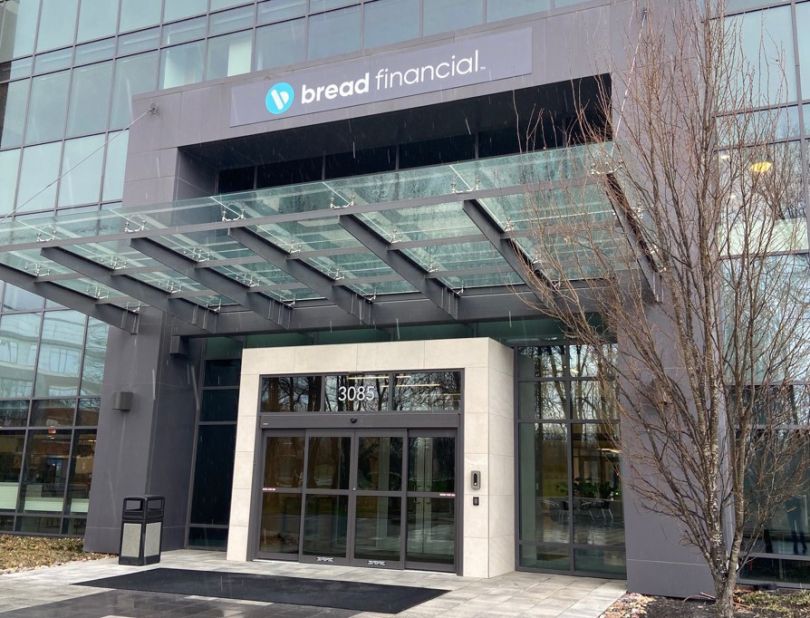
Bread Financial is a fintech company providing personalized payment, lending and saving solutions.
Would you describe your current work model as “remote-first,” “office-occasional” or “office-first?”
As we continue to operate in this hyper-competitive and rapidly evolving business environment, we want to ensure we are creating the right flexibility and balance for our associates. Over 70 percent of our workforce is fully remote, with 20 percent working a hybrid schedule.
Our goal is to support associates in their choice of what working environment is best for them. More importantly, we want their career to fit into the life they desire. We do this by providing them with the support they need to be successful outside the traditional office — with things like a work-at-home stipend and flexible working hours.
Being productive at work isn’t the only important aspect: Staying healthy mentally and physically is just as important to us. We provide mental health access for the associates and their family members, along with fitness reimbursement and other lifestyle options. Providing these resources ensures the associates feel supported in all aspects of their life.
We want our employee’s career to fit into the life they desire.”
How often are employees expected to come into the office, and why does this schedule work for your company?
Those who choose a hybrid schedule usually come into the office one to two times per week, at their choosing. Our office environment is a modern gathering space for teams or colleagues who are looking to reconnect in person, or to just grab some coffee at our cafe. We offer a fitness center, meeting spaces and 100 percent renewable energy.
The hybrid model works for our organization, because we’re meeting our associates where they are. We understand there are those who want to work in an office environment, and we want to support that need — and give them the flexibility to make that choice.
What are the key cultural and organizational ingredients that make your hybrid model work?
Giving our associates the tools and access they need when working remotely is most important to ensure success in their role. Staying true to ourselves and our values as an organization is a must. We look to our values to guide us in our cultural expectations and ensure we’re connecting with each other in other ways — including volunteering as a team, our annual giving campaign and our fireside chats, to name a few. We also ensure our senior leaders are continually holding open forums, town halls and holiday celebrations — all done virtually!

Squarespace is a website-building and ecommerce platform that enables users to build an impactful online presence.
Would you describe your current work model as “remote-first,” “office-occasional” or “office-first?”
None of the above. Squarespace offers opportunities that are fully remote, as well as flexible schedules with varying degrees of in-office attendance — depending on the specific role and department.
Flexibility at Squarespace isn’t new. Before the pandemic, 13 percent of our employees were fully remote, while most in-office employees had flexible schedules.
Flexibility at Squarespace isn’t new.”
How often are employees expected to come into the office, and why does this schedule work for your company?
Officespace employees — those on flexible work schedules — spend at least some of their time in a Squarespace office location. Depending on their role and how often they are in the office, some Officespace employees have assigned desks while others participate in hoteling desk space. Homespace employees — those who work remotely all or most of the time — are provided with a home-office budget of $2,000 to ensure they have what they need to set-up their remote environment and to work effectively. They also receive a monthly stipend of $100 to support the necessary ongoing business expenses associated with remote work.
This model works for Squarespace because we have empowered individuals, their managers, and department leaders to identify solutions that will promote productivity in light of the nature of their work and specific business needs.
What are the key cultural and organizational ingredients that make your hybrid model work?
Trust, individuality, collaboration and creativity. We care about the needs of our employees and appreciate the varied ways in which people do their best work individually and together.
For Officespace employees, our office environments provide an experience that is so much more than where people go to work. Employees enjoy a wide array of ways to connect — including in-office programming, various gatherings and happy hours. Thoughtful design elements and collaborative spaces are incorporated throughout our offices to inspire connection, brainstorming and creativity.
For Homespace employees, it is important that they have the resources they need to connect with the Squarespace community, regardless of their physical location. That includes providing a remote work stipend and budget, creating opportunities for team members to meet in person and generally taking steps to facilitate meaningful participation and collaboration.
Whether you have an Officespace or Homespace work-style, we continually experiment so we can find new and interesting ways to foster collaboration and connection between everyone at Squarespace.
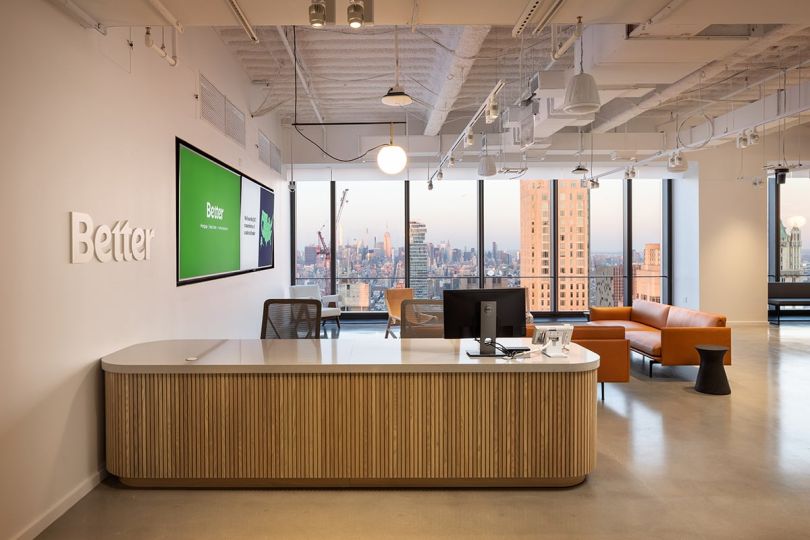
Better is a fintech and real estate company whose services included mortgage, real estate, title and homeowners insurance
Would you describe your current work model as “remote-first,” “office-occasional” or “office-first?”
Since the start of the pandemic, Better has changed dramatically. We learned how to succeed in a remote environment and discovered that many of us benefit from having more flexibility and choice in how, when and where we work.
No longer restricted to a digital environment, our employees want the opportunity to come together, collaborate and connect in person. We are office-first. We believe that the connections formed while being in person is irreplaceable, but that this belief doesn’t require employees being on site every day.
Over the past nine months we have stood up our hybrid program, BetterFlex, which provides employees more flexibility through a combination of policies, benefits and office space. We believe that the future of work allows for more flexibility to do your best work.
With that in mind, we’ve introduced three work modes: office-mode, flex-mode and remote-mode that give employees more choice while maintaining business continuity, compliance and a customer-first experience.
We believe that the connections formed in person are irreplaceable, but this belief doesn’t require employees being on site every day.”
How often are employees expected to come into the office, and why does this schedule work for your company?
We have found that different teams operate on different cadences. Some teams require being in an office full time, some operate on a quarterly basis, some vary week-to-week and countless other variations.
In turn, we are providing space, technology and training that enable employees and managers to find the rhythm that works best for them. In general, though, our office modes follow the same framework:
THREE WAYS TO PRACTICE WORK
- Office mode: Needs office access to perform core responsibilities.
- Flex Mode: Can perform less than 50% job responsibilities remotely.
- Remote Mode: Can perform 100% job responsibilities remotely.
What are the key cultural and/or organizational ingredients that make your hybrid model work?
The key to our culture is our workplace team going above and beyond in making our employees’ on-site experiences productive, engaging and special. It is to their credit that our offices have become destinations where our employees can connect with each other, our brand and our culture. No matter where or how they work, we want to ensure every employee has what they need to succeed.
In preparation for our hybrid future, we’ve been working for nearly two years on improving our physical offices, infrastructure and policies.
HOW BETTER IMPROVED THEIR FORM
- Redesigned and rebuilt our spaces to focus on safety, health, wellness, and collaboration
- Improved health and safety standards — including COVID19 protocols, emergency response and air filtration
- Increased breakout spaces, huddle rooms and modular furniture and amenities
- Updated AV technology in office
- Elevated experiences such as streaming parties for all hands and department demo days
Redesign Health is a company that powers innovation in healthcare by developing technologies, tools, and insights that lower the barriers to change across the industry.
Would you describe your current work model as “remote-first,” “office-occasional” or “office-first?”
In the past year, Redesign Health has introduced an open work philosophy, rooted in supporting and empowering our highly talented team members to do their best work in the way that works best for them. We hire smart, driven people who we believe can successfully work remotely, partially in-office or primarily in-office, depending on their preference.
With this truly hybrid model, we’ve found our team to be more flexible, productive and excited to spend time together in person when there is an opportunity to do so. Prior to the pandemic, every Redesign employee was based out of the NYC area. While there were benefits to being wholly office first — in-person collaboration, onboarding new team members, social events that didn’t include a zoom link — we have expanded our reach within the talent market.
Redesign is currently in a period of high growth, more than doubling our team in the past year and set to double again by end of year. We’ve found this approach to be essential in both recruiting and retaining top talent.
We are rooted in supporting and empowering our highly talented team members to do their best work in the way that works best for them.”
How often are employees expected to come into the office, and why does this schedule work for your company?
Redesigners self-identify as one of three options twice per year: fully remote, hybrid or office first.
Fully remote employees have no expectation to regularly be in-office but have an option to use co-working space in their city upon request. They are encouraged to travel to spend time in-person with their team at least once per quarter.
Employees based within a one-hour commute of our NYC office have the option to be hybrid — in office one to three days per week — or office-first — present four days per week.
In the spirit of flexibility and empowering our team members to do what works best for them, they are encouraged to make their own schedules. All three options have benefits associated with them, including quarterly stipends for office supplies and snacks or a set desk for office-first employees.
Giving employees the power to choose their preferences has been well-received, with a 96 percent satisfaction score on the way Redesign has handled its open work approach.
What are the key cultural and/or organizational ingredients that make your hybrid model work?
While it’s relatively easy to offer a remote-first model, making it work for Redesign has required a lot of deliberate thought and support for team members who are either working fully remote for the first time. To help with an increasingly meeting-heavy culture within our distributed team, we’ve built out more thoughtful meeting procedures, pushed for increased usage of Slack for asynchronous collaboration and encouraged team members to regularly audit how they spend their time.
We created location-based Slack channels and have started doing city meetups to curb zoom fatigue, in addition to monthly full-team remote events. Redesigners also regularly meet new faces virtually through our donut Slack channel and monthly virtual watercooler chats.
Across all of our engagement surveys, people say the number one reason they love working at Redesign is the people. We have a group of extremely kind, talented and driven people here who make coming to work every day enjoyable — regardless of location.

Cometeer is an e-commerce company aiming to revolutionize the global coffee market with flash-frozen coffee.
Would you describe your current work model as “remote-first,” “office-occasional” or “office-first?”
We encourage employees to work where they work best for the job at hand. The flexibility of remote work should always be combined with regular in-person interaction to foster context, trust and collaboration. We are a company made up of a wide range of functions and roles — each with unique demands and constraints. Some team members in marketing or digital roles rarely need to be in our headquarters in Gloucester, while our production, physical engineering and coffee teams have to spend all or a majority of their time on site.
Our objective is to create a great employee experience for all, but the specifics look different for remote and in person teams. All employees are eligible for competitive compensation and benefits, regular coffee education sessions with our expert coffee team and our onsite annual Cometeer-athon.
In-person team members have access to coffee and snacks in the break room and an on-site gym. Remote team members are given a generous work-from-home stipend for equipment needed to be productive. They also have opportunities for quarterly in-person meetings with their individual teams.
We trust our employees to figure out what works best for them.”
How often are employees expected to come into the office, and why does this schedule work for your company?
We trust our employees to figure out what works best for them. Employees whose jobs do not require their physical presence are expected to work with their managers to establish a remote schedule that maximizes their productivity and well-being.
We intentionally do not prescribe how many days or which days, but most employees who live nearby come into an office two to three days per week because they enjoy the camaraderie — and coffee — in our Gloucester, Boston and New York offices.
What are the key cultural and organizational ingredients that make your hybrid model work?
We’ve established the tenets to guide our approach to a hybrid, distributed model:
MANTRAS FOR HYBRID WORK
- Measure and reward results, not face time.
- Hire smart people, treat them like adults and trust them to do their jobs.
- Ensure all team members have access to the same information.
- Frequent, transparent communication in all directions is critical.
- Setting aside time to get to know the humans you work with.
- Strive to be agile, flexible and open to change in all ways.
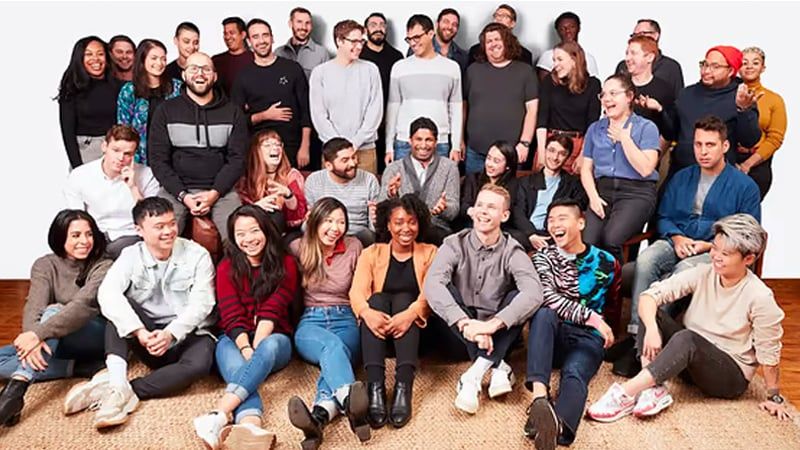
Bespoke Post is a lifestyle subscription box and e-commerce company.
Would you describe your current work model as “remote-first,” “office-occasional” or “office-first?”
Office-occasional. We’re a product-driven company, and our employees benefit from interacting with merchandise and understanding both our box and shop products. We believe that camaraderie and socialization are a vital aspect of our work model — the riffing, innovation, and unexpected collaboration that happen from just a 5-minute chat are irreplaceable!
We trust and empower our employees to schedule and organize their days at home and days at work so we can have the best of both worlds.
We trust and empower our employees to schedule and organize their days at home and days at work.”
How often are employees expected to come into the office, and why does this schedule work for your company?
Local employees are recommended to come into the office two days a week, but our policy is flexible. Some come in more often — such as our product development team and our photography team — and others work completely remote.
We’re trying to make the office a destination for collaborative meetings between departments and team events. From a productivity standpoint, working from home isn’t a one-size-fits-all solution. From a mental health standpoint, we think community is key. The past few years have taken a toll on every individual, and we want to give people a choice.
What are the key cultural and organizational ingredients that make your hybrid model work?
Our robust onboarding program ensures that new employees, whether they’re joining remotely or locally, have what they need to work efficiently and connect with the rest of the company. We’re thoughtful about including learning opportunities, and we make it clear which events are hybrid, remote-friendly or in-person.
From our hybrid bi-weekly all-hands meeting to our in-person happy hours to our remote Wellness Wednesday experiences with Heal Haus or Bolder Money, we work hard to keep things relevant and inclusive.
We believe everyone is responsible for creating culture, and that can be dependent on the work environment and whether you’re remote or local. Ultimately, as a people team, we have a responsibility to create space in which community can be built, within and beyond programming.
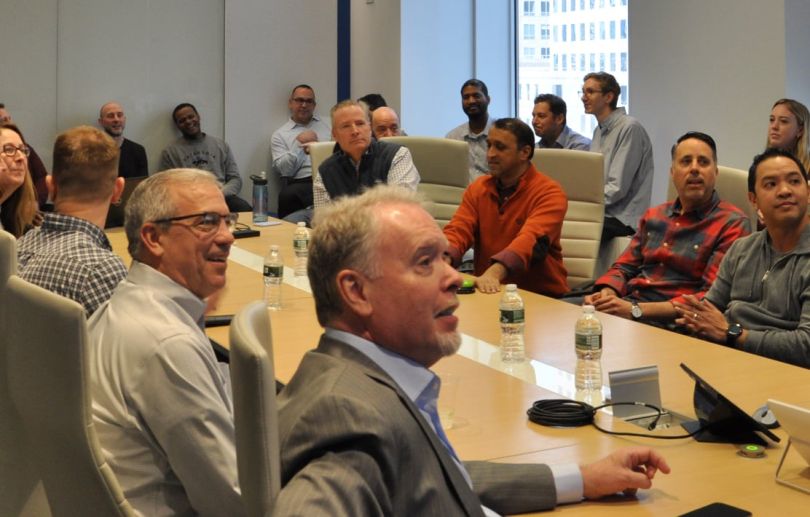
EquiLend is a fintech company designed to increase efficiency and automation in the global securities finance marketplace.
Would you describe your current work model as “remote-first,” “office-occasional” or “office-first?”
In March of 2020, we transitioned to working remotely to protect the health and safety of our employees. In the two years that followed, EquiLend team members demonstrated phenomenal dexterity, adaptability and productivity in the remote-first environment.
We know that employees appreciated the increased flexibility that working remotely offered, but that many of us were also excited for the day when we could once again safely collaborate in person, catch up over coffee and reunite at staff gatherings in New York, London and our other locations around the world.
That’s why we decided to implement a hybrid model. We have designed a unique model where employees have a block of days each year they can take to work remotely, while working from the office on the other days. All of our global offices have reopened, and several were recently renovated to facilitate teamwork and enhance connectivity between our offices around the globe.
We know we’re better together, whether that’s physically or virtually. Most of the time, it’s a mix of both!
We know we’re better together, whether that’s physically or virtually.”
How often are employees expected to come into the office, and why does this schedule work for your company?
EquiLend employees receive a balance of 100 days each calendar year to use to work outside of the office. This offers each employee the flexibility to use their time virtually and in-office in a way that best fits their schedule. Whether they prefer a consistent schedule week-to-week or to save their remote days for a particular time of year, as long as their manager approves it, they can do it!
Brian Lamb, our CEO of EquiLend, kept three things in mind that are deeply important to the ethos of the company: innovation, a social environment and energy.
These key elements are the basis of why we work better together, yet we also recognize the importance of providing an environment where our staff are best positioned to continue delivering the highest-quality products our clients are used to.
What are the key cultural and organizational ingredients that make your hybrid model work?
EquiLend’s corporate values established a longstanding cooperative environment that has enabled us to adapt quickly, together. At EquiLend, we uphold 13 company values, including: embracing change, trusting each other, being a team player, seeing the bigger picture, and always delivering.
As people continue to focus on other priorities outside of work, employers must show employees that they are rising to the challenges of these unprecedented times and adapting and changing along with the employees themselves.
A critical piece of this change was looking at how we bring the different ways people work together. Trust is the foundation of hybrid work success, but establishing this implicit agreement can be complex. We clearly communicate the flexible work expectations and provide the appropriate support mechanisms to facilitate productivity. Lastly, we agree on work outcomes and outputs but are flexible over how, where and when the team delivers those objectives. This strategy reinforces that team member participation is judged by contribution, not location.
With our hybrid approach, we sincerely believe we have retained the best of both worlds for our employees, who remain our greatest asset.
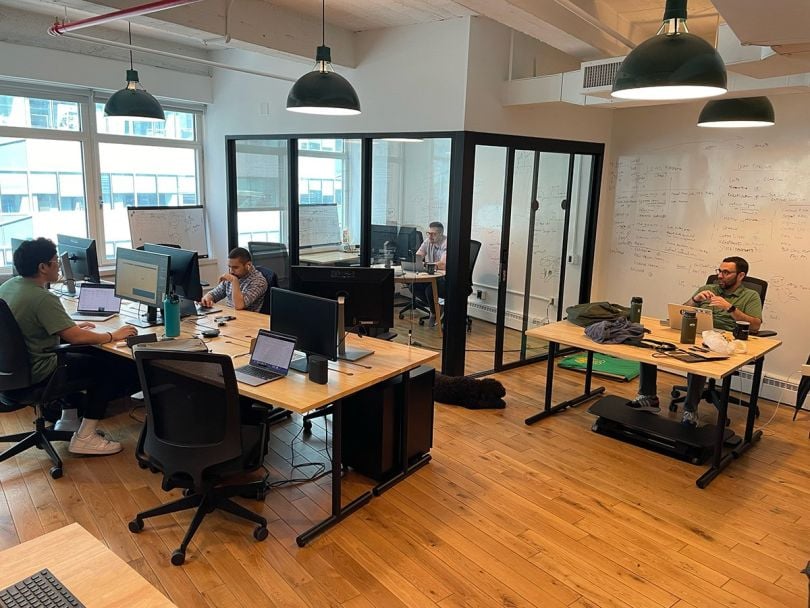
INVISR is a fintech company focused on delivering solutions to the banking and lending industries.
Would you describe your current work model as “remote-first,” “office-occasional” or “office-first?”
INVISR is a twenty-person company, of which around half are located in the New York City area. For those that are local, we utilize an office-occasional model, seeking to balance the flexibility of a work from home environment with the relationship-building benefits of a traditional office model.
We seek to balance the flexibility of a work from home environment with the relationship-building benefits of a traditional office.”
How often are employees expected to come into the office, and why does this schedule work for your company?
INVISR suggests that our NYC-based employees work out of our office Tuesday, Wednesday and Thursday. I say “suggests” because we also allow our local employees to work from home Tuesday through Thursday for virtually any reason. We’re relatively new to this structure, but we’re hopeful that it will provide the proper balance between the work-from-home structure the labor market demands in 2022 with the relationship building that comes most organically with in-person coworking.
What are the key cultural and/or organizational ingredients that make your hybrid model work?
Like many companies, we’re still experimenting to determine the best long-term fit for our organization. The main ingredient for us is to foster an environment where our team members are comfortable expressing their feelings about the management of our company.
Because the goal of an in-office focus is relationship building, we prioritize having fun as a team. Everyday we’re in the office we take our team to lunch and keep regular happy hours and social events. It’s important to focus on our fully remote employees: to make sure they’re included and to create opportunities for in person events and digital company events.
I can’t say that we have found the perfect model, but our leadership team will continue to focus on finding the right balance for our organization.
CoreWeave is a cloud company providing enterprise scale.
Would you describe your current work model as “remote-first,” “office-occasional” or “office-first?”
I always describe CoreWeave as remote-friendly, versus remote-first. We currently have three offices in Northern New Jersey, Brooklyn, NY and Philadelphia, PA. At the same time, we have employees distributed across the country in 14 states. Our distributed teams are 100% remote.
For those that are local, we have adopted more of a hybrid model. We tend to gravitate towards the office on most days, but provide a lot of flexibility for those that are local to work remotely when it suits their needs.
How often are employees expected to come into the office, and why does this schedule work for your company?
Our local team enjoys coming to the office on most days. Some team members prefer to come in every day, because that is how they find they are most productive. Others come in three to four days a week. We don’t find the need to be rigid in a schedule, as priorities can shift on a weekly basis.
Flexibility and communication are the key drivers of our success with a hybrid model.”
What are the key cultural and organizational ingredients that make your hybrid model work?
Flexibility and communication are the key drivers of our success with a hybrid model. Teams are in constant communication via Slack and are committed to scheduled weekly stand-ups.
When employees feel invested in what we are doing and the impact they have on moving our organization forward, it really doesn’t seem to matter where they sit.



